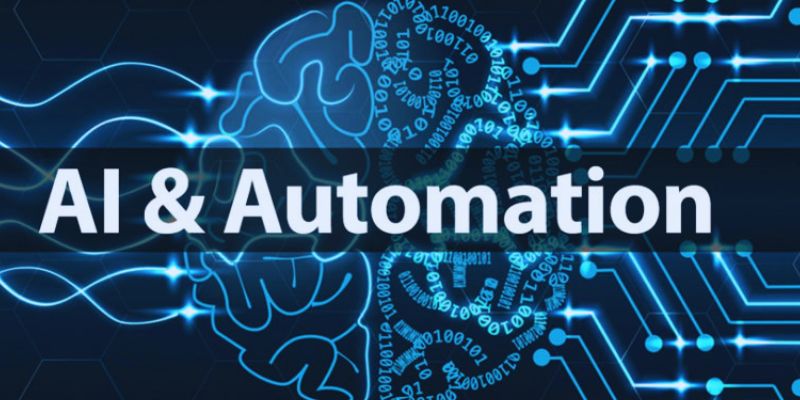The use of artificial intelligence (AI) in finance offices is no longer a far-off dream; it's already happening. Companies are under more and more pressure to get their employees ready for a change in how finance jobs are done as AI-powered financial tools become more common. It's not enough to prepare finance teams to learn new tools; they also need to change their ways of thinking, working, and skills to stay successful in a business world that is always changing.
Why Finance Employees Must Be Ready for AI
AI in Finance offers benefits that are hard to ignore — automation of repetitive tasks, enhanced data analysis, quicker reporting, and reduced human error. However, many finance professionals still rely on traditional, manual methods for processes like invoice management, expense reporting, and forecasting.
Companies that wish to stay ahead are realizing that AI isn’t replacing finance professionals — it’s changing the way they work. Those who adapt can become more strategic and valuable contributors to their organization.
Identifying the Role AI Plays in Finance Functions
Finance employees need to understand where AI fits into their daily responsibilities. When they see the practical applications, the technology becomes less intimidating.
Some of the common AI applications in Finance include:
- Automating routine tasks like data entry or reconciliation
- Predictive analytics for forecasting cash flows and revenue
- AI-powered audit assistance
- Intelligent chatbots for handling finance-related queries
- Real-time fraud detection systems
Instead of manually pulling data or checking transactions, finance professionals will increasingly focus on interpreting AI-generated insights and making strategic decisions.
Creating an Environment for Learning and Change

A key step in preparing employees for AI is building a work culture that supports curiosity and learning. Finance teams often operate in high-pressure environments with a strong focus on accuracy and routine. As a result, the introduction of AI can cause uncertainty or resistance.
Companies need to be transparent about their AI goals and give employees a safe space to learn and experiment. Early communication about how AI will support — not replace — their work can significantly reduce fear.
Assessing Skill Gaps Before Training
Before any training program begins, businesses must assess where their team currently stands. It involves identifying the digital skills employees already have and what they need to learn.
Some questions to guide this assessment:
- Are employees confident using data analysis tools?
- Do they understand how to interpret trends and financial models?
- Are they familiar with tools like Power BI, Excel macros, or ERP systems?
- Have they had any exposure to AI concepts or cloud-based software?
A basic survey or informal interviews with team members can offer valuable insights. This information helps build a focused training plan that targets real gaps.
Designing a Training Program Tailored for Finance
Once the skill gaps are identified, the next step is designing a practical training plan that supports growth without overwhelming employees. The training program should cover three key areas:
There should be a basic introduction before diving deeper into any new tool or concept.
1. Understanding AI Fundamentals
Finance employees don’t need to become tech experts, but they should understand the basics of how AI works.
- What AI is (and what it is not)
- Types of AI used in Finance
- How machine learning models assist in financial decision-making
- Ethical concerns and data privacy when using AI
This knowledge helps employees feel more confident using AI tools in their roles.
2. Developing Data Literacy
With AI tools generating large volumes of data, the ability to read and interpret this data becomes crucial. Finance professionals should learn the following:
- How to read charts and dashboards
- How to identify trends and anomalies
- How to use data for decision-making
- The basics of storytelling with data
When employees are data-literate, they can use AI more effectively and spot risks or opportunities early.
3. Hands-On Practice with Tools
Practical learning is often more effective than theory. Organizations should provide training on the exact tools their finance teams will be using — whether it's a forecasting platform, expense automation software, or AI-driven dashboards.
It could include:
- Simulations of AI tools in real-life scenarios
- Case studies showing AI Success stories in Finance
- Step-by-step guides for using new software
- Short workshops or recorded tutorials
By practicing with the tools they’ll actually use, employees gain confidence and clarity.
Promoting a Continuous Learning Culture
Learning about AI should not be a one-time event. It’s an ongoing process, especially as technologies evolve. Businesses that encourage ongoing learning will see their finance teams grow stronger over time.
Some simple ways to promote continuous learning:
- Share monthly newsletters with AI tips and resources
- Offer access to online learning platforms
- Encourage peer learning through team knowledge-sharing sessions
- Recognize team members who proactively upskill
Making learning a regular part of work builds long-term adaptability.
Combining Human Skills with AI Capabilities

Even the most advanced AI tools can’t replace human intuition, ethics, and emotional intelligence. That’s why finance employees need to understand that their human skills are still vital.
Some key human skills finance teams should continue developing:
- Critical thinking
- Ethical judgment
- Collaboration and communication
- Strategic planning
When combined with AI’s speed and accuracy, these skills create a high-performing finance function.
Conclusion
In today’s fast-changing finance world, preparing employees for AI is no longer optional — it’s essential. By focusing on practical skills, clear communication, and ongoing support, companies can guide their teams through the transition with confidence. Finance professionals don’t need to fear AI; they need to learn how to work with it. With the right training, AI becomes a tool that enhances human decision-making, not replaces it. Businesses that invest in their people will see better results, stronger teams, and a future-ready finance function.











